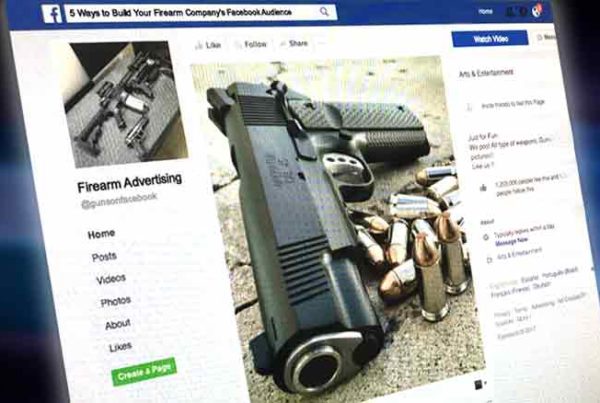
Now that the Presidential election is over, there seems to be a lot of confusion on what will be the fate of the gun industry. Will it slide into stagnant growth like in the Bush years or will it continue on its “up and to the right” meteoric trajectory of the past eight?
There are several trends that indicate continued stable growth. The fear of terrorism, mass shootings, distrust in law enforcement and illegal immigration to name a few. But more importantly is the trend of more “non-gun types,” like Millennials who are buying firearms for the first time.
Millennial gun buyers are comprised of those who are between the ages of 19 to 35 in 2016. They are urban, ethnic, young, educated, and are composed of both men and women (Republican and Democrat) who are health-conscience and tech savvy. They see their world as a dangerous place and are do-it-yourself minded that are empowered to not only protect themselves but also their friends and families.
Millennials represent a new opportunity for firearm brands. Marketers that have shied away from this demographic in the past—are now rethinking this burgeoning segment—due to the anticipated economic and political environment. The era of the white, all-male, blue-collar customer is giving way to the younger, urban and more female firearm buyer.
In this post, I want to explore a few thoughts using the recent launch of The Saint, by Springfield Armory on how to attract these kinds of customers and earn their trust to help you build the next generation of firearm brand loyalists.
1. A new kind of gun marketing
With the launch of Springfield Armory’s SAINT in November, it’s no mystery who SA was targeting in their ads. If you direct your attention to their sexy imagery, messaging and tone—it’s aimed at people who are young, athletic, attractive and active. When I first saw the lead-up campaign, I thought SA was coming out with a fitness program (see point #3).
“Springfield has specifically targeted Millennials in its ads and creation of the clever campaign moniker complete with hashtag, says Jacki Billings for Guns.com. #DefendYourLegacy encourages consumers to engage in conversation with each other online and across all social media platforms. Also, the company assembled multimedia featuring young people accomplishing physical feats with voice-overs spouting catchy phrases such as “train your fear” — perfect for a generation known for 120 characters or less.”
Smith & Wesson also is picking up on this trend. “With younger, more urban buyers in the market, as well as more women, it’s a new demographic shopping for guns than in the past.” (Source: The Motley Fool)
Will SA set a new paradigm in advertising for the gun industry? I believe we’re going to start seeing a slight shift from the typical tactical and “mercenary-esk” imagery to newer, fresher campaigns from manufacturers focused on younger demographics that are more defense oriented and who are more female—SilencerCo. already being one of them.
2. Millennials spend more time online
According to AdAge, Millennials are spending an average of 25 hours per week online – and they’re craving content-driven media. They’re scouring websites, blogs, and social media because they feel empowered by all of the remarkable content they’re discovering. They’re also sharing, liking, pinning, tweeting, snapping, forwarding, and commenting on all of their findings to impart this sense of empowerment to the online community. So, what makes this type of content really resonate with this group? Millennials trust what they feel is authentic. (Source: Hubspot)
Millennials are 44% more likely to trust experts (influencer marketing), who happen to be strangers, than advertisements and 247% more likely to be influenced by blogs or social networking sites. (Source: Hubspot)
If you’re not actively focusing your efforts online—now is the time to make a move to reach Millennials. They are not Guns and Ammo subscribers nor do they watch the Outdoor Channel.
3. Integrate with things they already know and trust
Buying or shooting a gun can be somewhat of an extended and considered buying process as Millennials consider their options. One way to help bridge the gap is to infuse things that they already know and trust. Springfield Armory, whether they intentionally did this or not, used athletic imagery (models working out) to create the appeal of the SAINT campaign as well as shots leveraging the Under Armor brand to initiate trust.
Fitness and self-defense go hand in hand. And it’s interesting to point out: 81% of Millennials say that they exercise regularly, compared to only 61% of Boomers. 76% of all regular exercisers are Millennials.
Military service members know the saying “Physical fitness is the cornerstone of combat readiness” by heart. Physical exercise keeps soldiers, airmen, seamen and Marines in top condition, so they’re always ready for any mission. Source: U.S. Army Training and Doctrine Command: Standardized Physical Training Guide
Point being, fitness is a priority for urban and suburbanites—its a natural integration with the self-defensive nature of owning a firearm. I predict this trend will grow.
4. Get your product in their hands
I don’t think there is a better way to sell a product than to get it in the hands of your prospect at a local gun store/range after a well-thought out lead nurturing process. I recently experienced this with my Millennial friend who was considering the SIG P320. After researching online and talking to me about what he should buy for a home defense weapon, we decided to head down to our local gun shop here in Nashville to shoot it. After squeezing through a few mags, he was hooked.
If you can combine lead nurturing that directs prospects to their local dealers for a hands-on demo of your product, your chances of closing that sale increase significantly. Research conducted by Forrester has shown that marketers see an average 20% increase in sales opportunities from nurtured vs non-nurtured leads. Furthermore, the research also reveals that companies that excel at lead nurturing generate 50% more sales at a 33% lower cost (Source: Forrester, 2014).
In conclusion, Millennial gun buyers are an untapped market segment waiting to be engaged. This is an exciting time to be in the firearms industry as opportunities exist to reach new buyers we didn’t have time for in the past eight years. This is sure to change the face and image of the industry forever.






